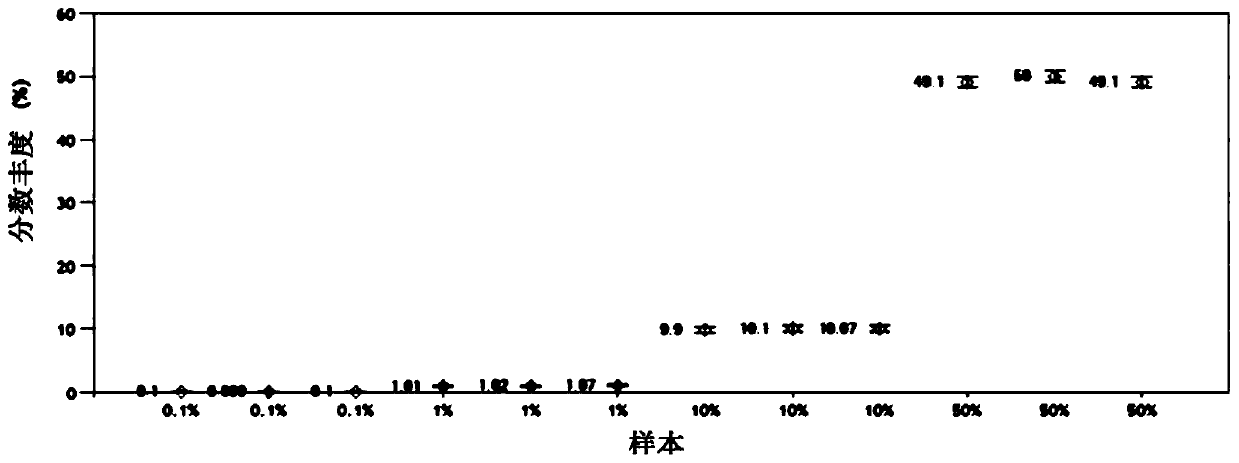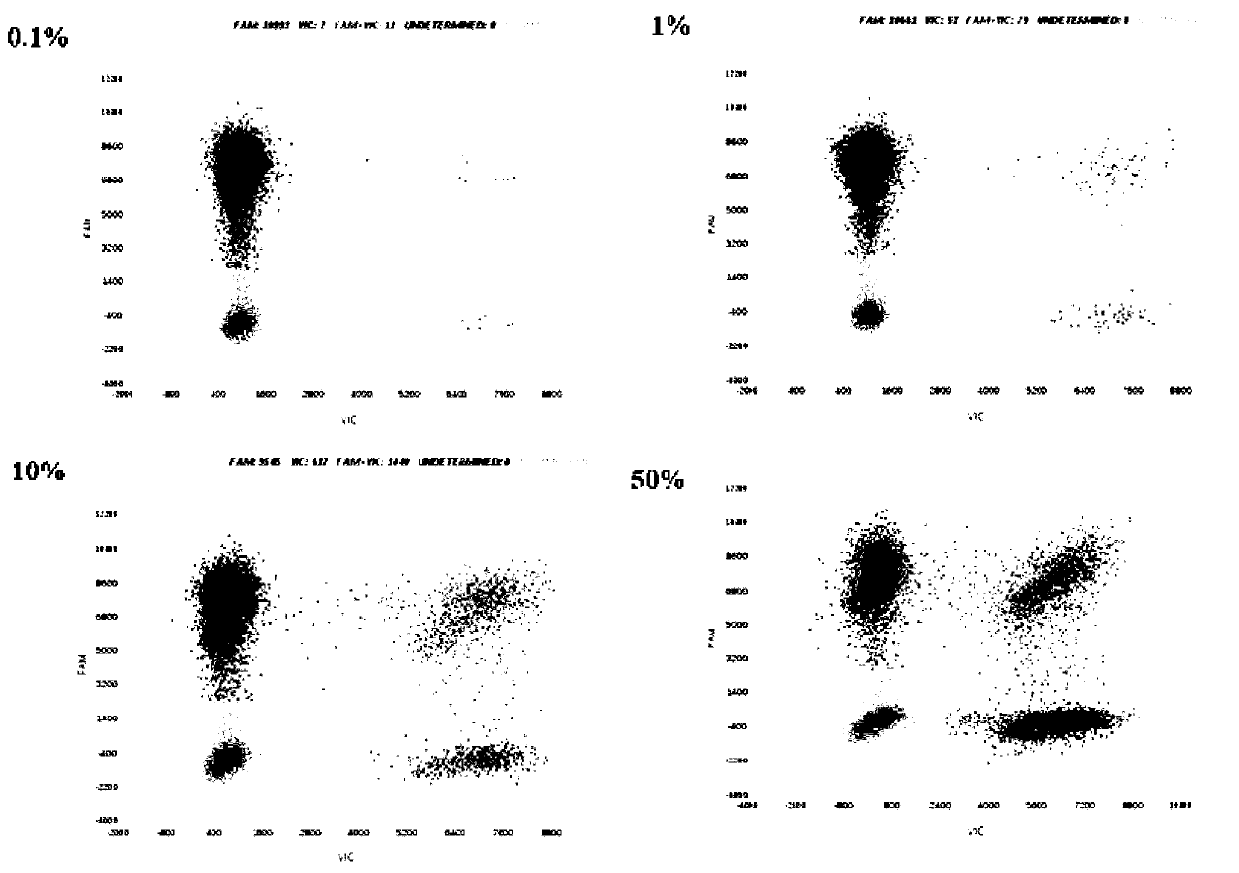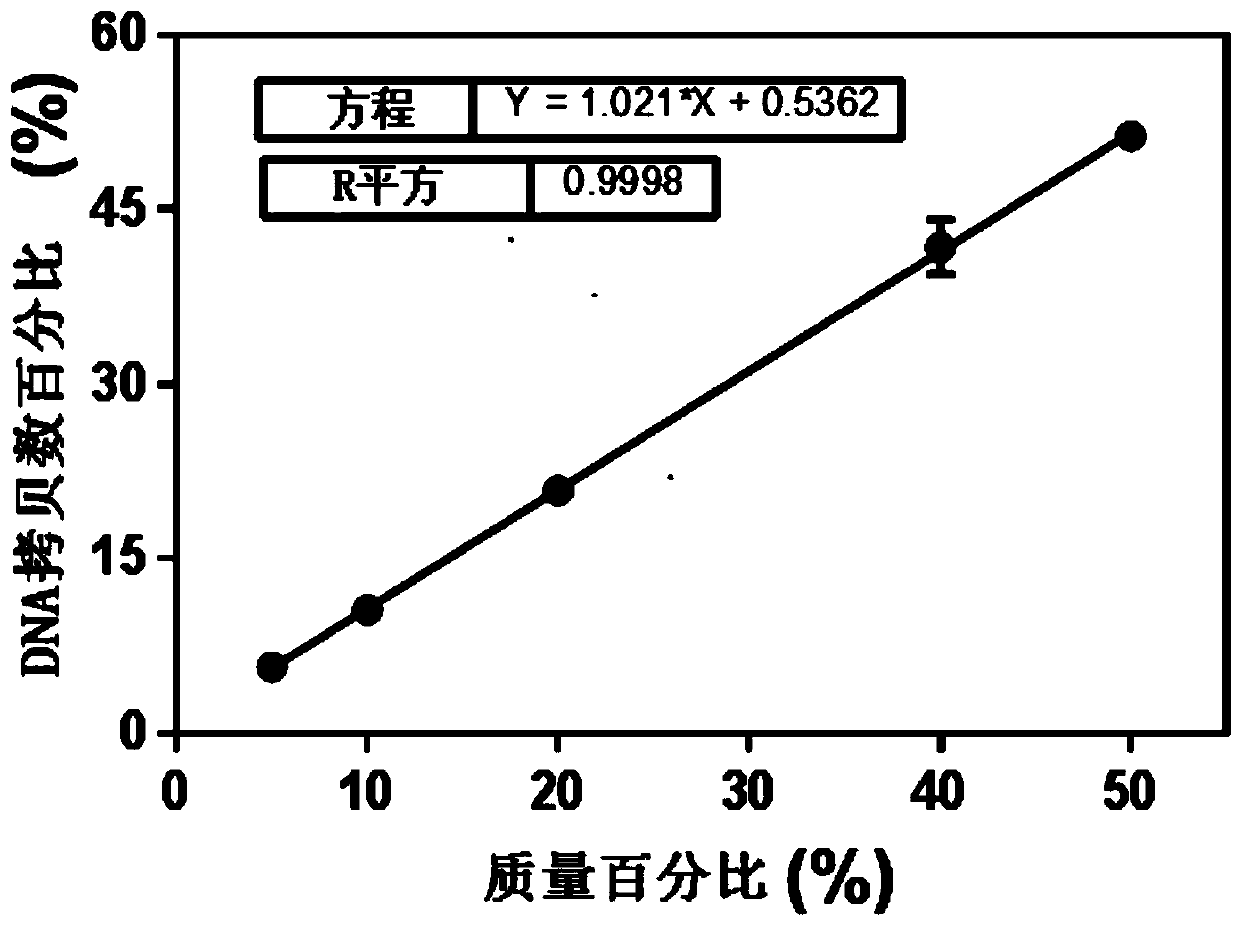Method for quantitatively detecting peanut components in sesame butter and sesame paste by utilizing double digital PCR
A quantitative detection, sesame paste technology, applied in biochemical equipment and methods, microbial determination/inspection, resistance to vector-borne diseases, etc. achieve the effect of ensuring accuracy
- Summary
- Abstract
- Description
- Claims
- Application Information
AI Technical Summary
Problems solved by technology
Method used
Image
Examples
preparation example Construction
[0041] 1. Preparation of samples and extraction of genomic DNA templates: Take 10 g of samples (sesame, peanut, sesame paste, sesame paste filling, etc.), crush and homogenize with a grinder at 1800 rpm for 3 minutes.
[0042] Weigh 30mg of the sample into a 1.5mL centrifuge tube, and extract the sample DNA using the kit method. The kit can be selected: Kurabo QuickGene DNA extraction kit DT-S, Wizard Genomic DNA purification kit (Promega, A1120), PSS nucleic acid automatic extraction instrument, etc. DNA extraction method. Those skilled in the art are familiar with these DNA extraction methods, so as to extract the DNA of the corresponding samples respectively.
[0043] 2. Design and synthesize the primers and probe sequences of the sesame species-specific gene sequences and the primers and probe sequences of the peanut species-specific gene sequences. The nucleotide sequences of the primers and probes are as follows:
[0044]
[0045] 3. Perform double digital PCR reaction...
Embodiment 1
[0093] Example 1: Verification of the Absolute Limit of Quantification of Copy Number
[0094] Samples for testing: In order to verify the absolute limit of quantification of the copy number of this method, the genomic DNA of sesame and peanut were respectively extracted and serially diluted to obtain serial dilutions of 500, 100, 20, 10, 5, 1 copy / microliter of sesame and peanut DNA. Three parallel ddPCR and cdPCR experiments were carried out, and the experimental results are shown in Table 1.
[0095] Table 1 Verification of the absolute limit of quantification (ddPCR and cdPCR) of peanut and sesame DNA copy number
[0096]
[0097] As can be seen from the results shown in Table 1, on the ddPCR platform, when the peanut DNA copy number concentration is 3.77 copies / microliter, the RSD values among the three parallels are all greater than 25%, and when the peanut DNA copy number concentration is greater than or equal to 5.93 copy / microliter, the RSD value between three ...
Embodiment 2
[0098] Example 2: Validation of Quantitative Limit of Copy Number Percentage
[0099] For the sample: In order to verify the quantification limit of copy number percentage of this method, sesame DNA with known copy number concentration was used as the matrix, and peanut DNA with known copy number concentration was mixed, and the copy number percentages of the series were respectively 0.1%, 0.1%, and 0.1%, respectively. 1%, 10%, and 50% mixed samples of sesame and peanut DNA. Three parallel ddPCR and cdPCR experiments were carried out respectively, and the obtained experimental results are shown in figure 1 and figure 2 .
[0100] Depend on figure 1 and figure 2 The results shown show that for the mixed samples of sesame and peanut DNA whose copy number percentages are 0.1%, 1%, 10% and 50%, the detection results on the ddPCR platform are 0.099%, 1.033%, 10.023% and 49.400 respectively %, the RSD value among the three parallels was between 0.58% and 3.11%, and the recove...
PUM
 Login to view more
Login to view more Abstract
Description
Claims
Application Information
 Login to view more
Login to view more - R&D Engineer
- R&D Manager
- IP Professional
- Industry Leading Data Capabilities
- Powerful AI technology
- Patent DNA Extraction
Browse by: Latest US Patents, China's latest patents, Technical Efficacy Thesaurus, Application Domain, Technology Topic.
© 2024 PatSnap. All rights reserved.Legal|Privacy policy|Modern Slavery Act Transparency Statement|Sitemap



